From Publishing to E-Commerce: Lessons for Building a Thriving Newsletter
10+ years of insights from online writing, publishing, marketing and strategic guidance
Nine years ago, I met a client for lunch during a trip to Boston. We’d been working on a beta version of a book I was coaching him and his co-author on.
My clients, two Harvard MBA graduates, had conducted research on religious financial giving, and their professors and colleagues were urging them to do “something more” with their findings. I helped them protect their manuscript, advised them on interview techniques and encouraged them to weave human interest stories around their data.
At the time, I was starting to envision scaling up a dream of mine—helping authors self-publish and grow awareness within their networks, without the constraints of formal publishing. During our conversation about their next steps, I began outlining possible marketing strategies. My client look stunned that I was casually sketching out a marketing plan on the back of a napkin at lunch. He paused and said, “So you’re a polymath.”
From “Job Hopping” to Finding My Path
I didn’t know what the term meant at the time. But I did know often I’d been accused of job-hopping in my 20s, always eager to learn but quickly bored once I mastered a job.
At a top global immigration law firm, I once told a senior partner, “I get bored within three weeks at every new job. Can you keep me learning?” He did, letting me lead editorial processes for a first-of-its-kind immigration software. I was 27. Though I thrived on the challenge, I eventually left because I felt that staying in that environment would turn me into someone I didn’t want to be.
In 2012, I took a job that moved me from Dallas to Colorado Springs, becoming the first-ever content manager for one of HubSpot’s first Value Added Reseller agencies. I took a significant pay cut, but it felt like I was saving my soul in some way.
Like many neurodivergent people, I bring unbridled creativity and big ideas, often spotting potential issues long before others do. However, constant commuting, interruptions and forced socialization drained me. Growing up, I was told to assimilate, to endure inner chaos and exhaustion. On paper, I looked like a job hopper—someone unreliable. But really, I was just trying to push the reset button on a nonstop cycle of burnout.
I’m telling you this because maybe you weren’t made for a box either. Maybe you’re meant to be your own boss, or perhaps your creativity belongs in a quiet, safe space with a blank piece of paper and a pen.
I often struggled with the sense of not knowing where I’m going next, or if what I’m learning today would be “wasted” and I’d have to start fresh in my next role. But today I’m here to tell you that following your heart and taking a chance on yourself really can work out—even if the road map to get there is less than linear.
Looking back at all I’ve done and looking at my work now as an editorial strategist, everything layers beautifully into helping writers on Substack. Whether you’re looking to self-publish, explore your own writing seasons or walk intentionally toward a newsletter that can earn you an income, I’ve been helping people like you for more than a decade. And there’s a lot to share with you—takeaways from what I did right and lessons that can guide you as you follow your heart and give your voice to the world.
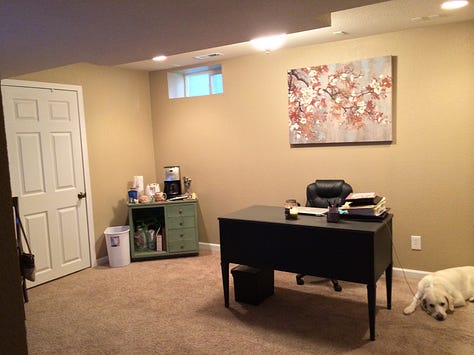
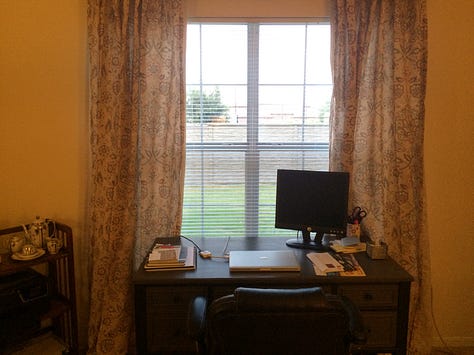
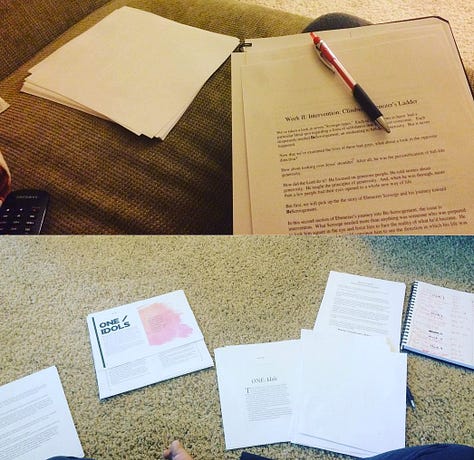
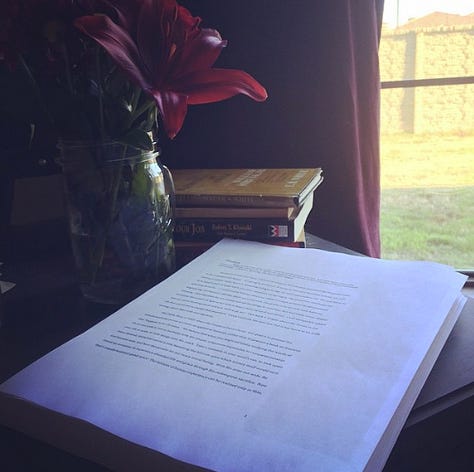

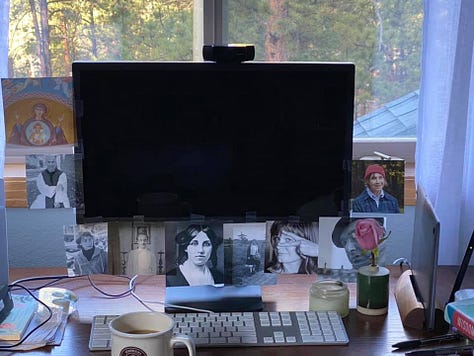
Lessons from the Publishing World
Editor, wrote and edited interview-based coffee table books. 2007 - 2009
If you’re thinking about self-publishing or working with an editor one day, don’t underestimate the importance of the editing process. A book—or any substantial project—requires multiple rounds of careful revision to reach its full potential. When choosing an editor or considering the self-publishing route, ask about their editorial process: How many rounds of editing will your work go through? How many different sets of eyes will review it? These details are crucial because even the best editors can only catch so much on their own. Allow ample time for each stage of editing, from manuscript to final proof, to ensure the quality of your finished product.
Navigating the Complexities of Self-Publishing
Editor, human factors engineering organization and self-publisher. 2009 - 2010
Publishing a book, especially before platforms like Amazon’s KDP or IngramSpark existed, was an arduous task. This experience taught me that in newsletters, as in book publishing, you must manage risks and innovate within constraints. Start marketing your newsletter early, just as you would with a book. Begin engaging potential readers before you’ve finalized your content to build anticipation and ensure a smoother launch.
Resume Writer, lasted six months.
Writing a resume can be notoriously difficult because it’s hard for most of us to see our own strengths clearly. This applies to the first impressions we set up in our newsletters as well. You may struggle to define your newsletter’s value or what makes it stand out. Just as I helped clients articulate their accomplishments, most of us can benefit from getting outside feedback on our newsletters. Ask a trusted reader or colleague what they think your strongest points are—it can often provide clarity and direction.
Building Trust Through Authenticity
Editor, global immigration firm. 2010 - 2012
Working in a global immigration firm taught me the power of trusting your instincts and being authentic, especially under pressure. For your newsletter, this means embracing what makes your voice and reader experience uniquely yours. Like sending handwritten notes to 60+ attorneys, small, personal touches in your newsletter—such as a tailored message or a thoughtful recommendation—can create lasting connections with your readers.
The Impact of SEO on Content Creation
Content manager, inbound marketing agency. 2012 - 2014
As a content manager at an inbound marketing agency and being inbound marketing certified, I learned the importance of balancing human connection with SEO strategies. While SEO is valuable, the real key to success lies in consistently delivering on the promises you make to your audience. Whether you're crafting a product description or writing a newsletter, people are looking for something genuine and meaningful. In your newsletter, prioritize creating something that fulfills your readers' expectations and provides real value. Consistency in delivering what you promise will build trust and loyalty far more effectively than constantly tweaking SEO strategies.
Owner, content and self-publishing company. 2014 - 2016
Running a self-publishing company taught me that authenticity is key. Many clients were looking for quick fixes, but the ones who succeeded were those willing to be honest about what they were offering. For your newsletter, this means being clear and truthful about what you’re delivering. Don’t chase gimmicks; instead, focus on the real newsletter experience you provide. Readers will appreciate your integrity and commitment to quality.
E-Commerce Insights for Newsletter Creators
Owner, Wakeful Shop, sensory-based ecommerce store. 2020 - 2021
Running an e-commerce store taught me that "on the shelf" dynamics apply just as much to newsletters as they do to physical products. Your newsletter, like any product, is subject to how it’s perceived by your audience—its timing, presentation and overall appeal. Consider how your newsletter is "shelved" in your readers' inboxes. Is it positioned to catch their attention, or does it get lost in the noise? Understanding these dynamics can help you craft a newsletter that stands out, resonates with your audience and drives engagement.
The Power of Mindful Writing
Certified meditation instructor, 2016 - present
Your relationship with your mind is your relationship with your writing is the relationship with your Voice. It’s all interconnected and when something is sputtering in your newsletter, it may also be sputtering in your heart.
Owner, editorial strategist and professional writer. 2016 - present
There’s a way to be both intuitive and intentional as a writer and newsletter creator. Being original doesn’t mean never asking for help—in fact, it often requires learning new skills that overlap with entrepreneurship, e-commerce and even writing sales emails, likely more than you ever anticipated. But all these mechanisms of the newsletter experience can be filtered through your Voice, shaped by how you approach friendship and what you want to bring into the world.
What’s Next: A Peek Into September’s Exploration
As I reflect on these career experiences, I see how each role has laid the groundwork for this great Substack experiment. This is where I finally threw off the trappings of stringent content plans and exhausting, dissociating social media strategies and started fresh as a student.
I wanted to test this new landscape for writers exactly as I was—a disillusioned, exhausted strategist, writer and first-time mother. During the last year, this experiment has opened doors, allowing me to pull together different approaches to see what truly works, all while listening to my heart and avoiding burnout.
In September, I’ll be diving deeper into the principles that have shaped my approach—exploring e-commerce strategies, the art of defining your selling proposition and the "on the shelf" dynamics that can shape your newsletter’s success.
Before we dive into these topics, I invite you to reflect on your own journey:
What experiences from your past work or creative projects have influenced how you approach your newsletter today?
How do you define what sets your newsletter apart from others in your space?
Have you considered how your newsletter is positioned “on the shelf"—and how that impacts your readers' perceptions and your paid strategy?
These are the kinds of questions we'll explore together in the coming month. Stay tuned for essays and resources that will empower you to connect more deeply with your audience and find your place in the crowded digital landscape.
New to Amanda and The Editing Spectrum?
Explore My Work: Start with my Writing Plan Tools Workshop (available for one-time purchase) or the Editorial Launch Pad.
Workshops & Speaking Engagements: Invite me to speak or host a workshop for your university, writing community or in-house team. Send me an email at TheEditingSpectrum@gmail.com.
Bespoke Guidance for Creative Entrepreneurs: Whether you need The Pricing Gut Check to ensure your paywall strategy is on point, The Reader Connection Boost to drive more engagement, or The Writing Plan Makeover to streamline your publishing schedule, my bespoke strategy projects are designed to support your voice, goals and personal bandwidth. Together, we’ll craft a personalized action plan to help you overcome creative challenges and help your newsletter thrive. Fill out an interest form here.


My initial title for this piece was "Nothing Is Wasted." But the more I sat with it, I knew that I needed to be more direct about what I was exploring in the piece.
"Nothing Is Wasted" would have been appropriate if I was writing about first-person events inside my jobs. But since I wanted to share takeaways from every job I've had, I wanted the headline to reflect that.
This way strangers will see a curious combination (Publishing to E-Commerce?); my friends will see that I'm talking about newsletter takeaways (Something most of us can be coaxed into checking out); and my readers will see a combination of information that I don't usually talk about (10+ years? She's been doing this for 10+ years?).🫶
I like that idea of “shelving” a newsletter!